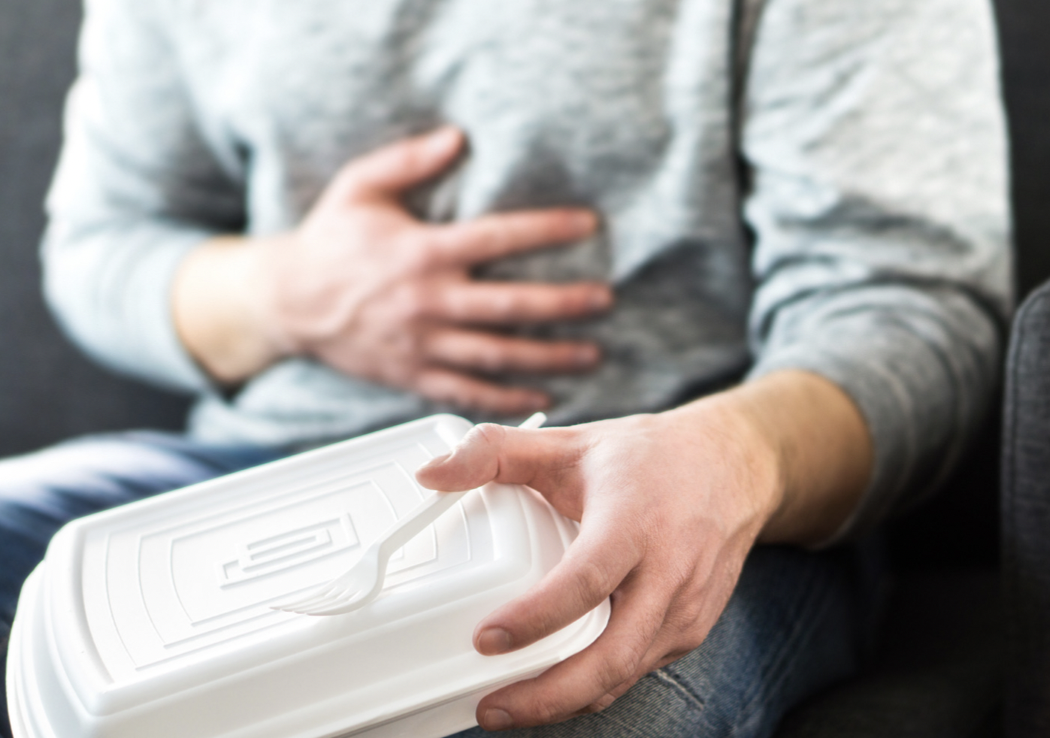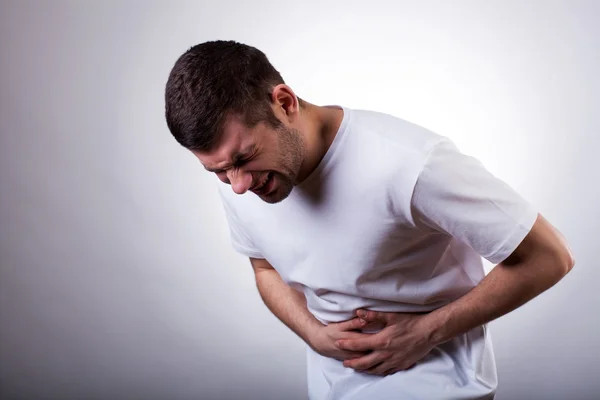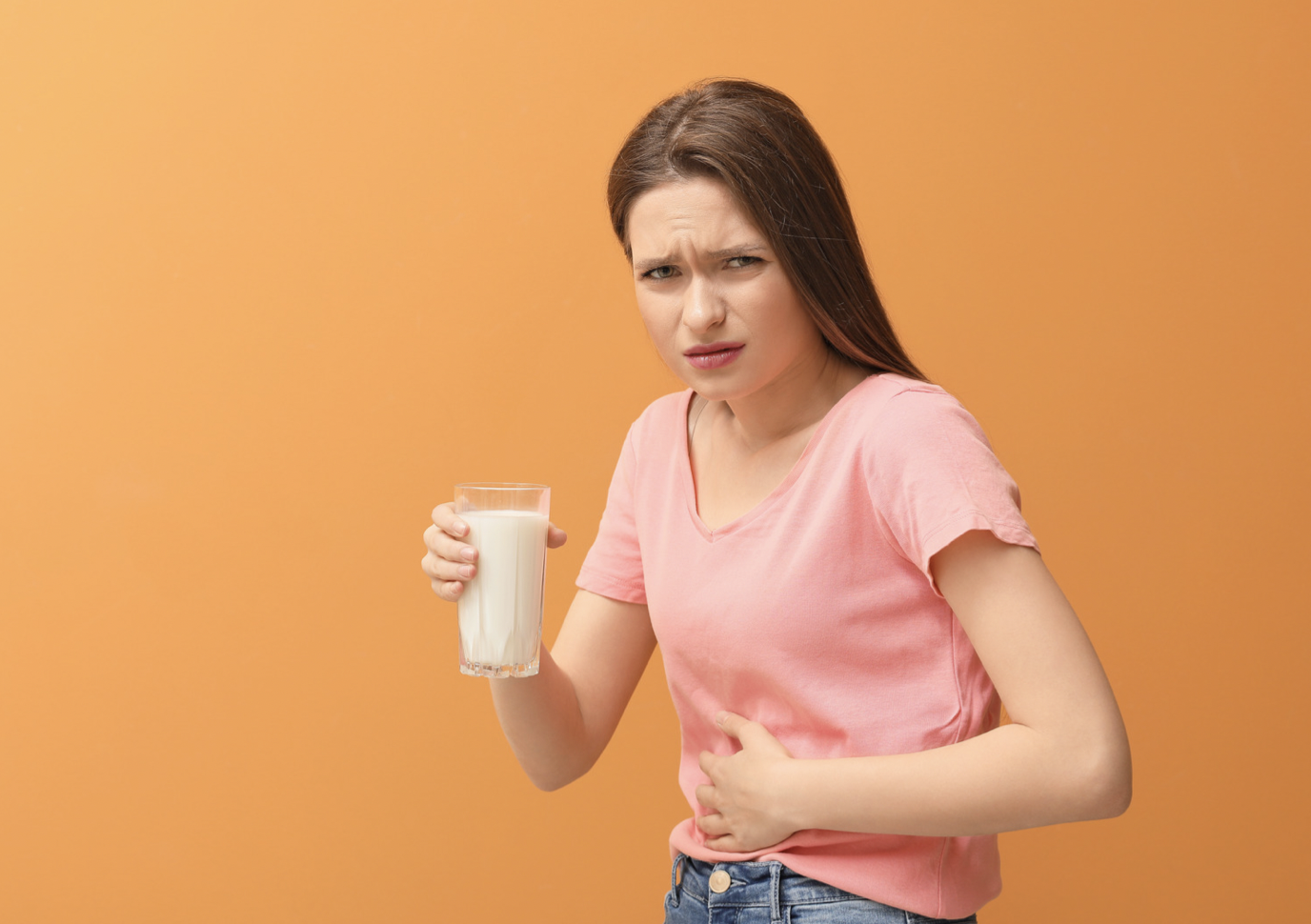Definition
Food poisoning encompasses a range of symptoms triggered by the consumption of contaminated food. Infectious agents like bacteria, viruses, or parasites can secrete toxins, inducing food poisoning. Contamination can occur at any stage, from food production to preparation at home, particularly if adequate cooking techniques are not adhered to during handling and cooking.
The symptoms can occur several hours to days after consuming contaminated food. The main symptoms typically affect the digestive tract, including nausea, vomiting, and diarrhea. In most cases, the symptoms improve on their own or with sufficient rest and recovery. However, some cases may require advanced treatment in a hospital.
Causes
Contamination of food by bacteria, viruses, and parasites can occur at various stages of food preparation, including growth, harvest, processing, storage, transportation, and final preparation. Contamination mechanisms often involve cross-contamination or the transfer of harmful microorganisms from one source to another. This risk is present in both raw foods, such as salads, and ready-to-eat meals. As these foods remain uncooked, dangerous organisms can persist, potentially leading to poisoning.
Numerous bacteria, viruses, and parasites are known to cause food poisoning. Some frequently encountered organisms include:
- Campylobacter sp.: This bacterium is found in raw livestock and birds, unpasteurized milk, and contaminated water. Symptoms typically manifest 2-5 days after consumption.
- Clostridium botulinum: Commonly found in canned foods or items stored at high temperatures for extended periods. Symptoms may appear 12-72 hours after consumption.
- Clostridium perfringens: Present in meat, soup, or food that has been left for an extended period. Symptoms usually occur 8-16 hours after consumption.
- Escherichia coli (E. coli): Found on meat contaminated during slaughter with feces. Spread through raw meat, unpasteurized milk, and contaminated water. Symptoms may appear 1-8 days after consumption.
- Salmonella sp.: Located in raw red meat, birds, milk, or egg yolk. This bacterium can also spread through improperly cleaned cooking tools. Symptoms typically emerge 1-3 days after consumption.
- Shigella sp.: Found in raw seafood, with symptoms appearing 24-48 hours after consumption.
- Staphylococcus aureus: Present in meat, salads, sauces, or pastries and spread through contact, coughing, or sneezing. Symptoms usually manifest 1-6 hours after consumption.
Risk factor
The symptoms that appear depend on the amount of dangerous substances or organisms swallowed, age, and general health conditions. Here are some groups that are at risk:
- Advanced age
As individuals age, their immune systems weaken, making it less responsive against infectious organisms compared to younger individuals.
- Pregnant women
Pregnancy induces changes in metabolism and circulation, increasing the risk of food poisoning. Reactions and symptoms in pregnant women can be more severe, and food poisoning has the potential to affect the baby.
- Children and infants
The immune systems of children and babies are still developing and may not respond as effectively to harmful organisms.
- Population with chronic diseases
Individuals with a history of chronic diseases, including diabetes, liver disease, and AIDS, or those undergoing chemotherapy for cancer may experience a compromised immune system response, rendering them more vulnerable to the risks of food poisoning.
Symptoms
The symptoms of food poisoning typically manifest as digestive tract-related symptoms, including nausea, vomiting, diarrhea or bloody diarrhea, abdominal cramps or pain, and fever. These symptoms and signs may appear hours to days after consumption and can persist for several days.
Due to the various organisms that can cause food poisoning, in addition to digestive tract-related symptoms, other organ system symptoms may also occur. For example, Clostridium botulinum can release neurotoxins that disturb nerve cells, leading to symptoms such as difficulty swallowing, vertigo, dry mouth, weakness, paralysis, or respiratory muscle paralysis.
Diagnosis
The diagnosis is determined by the primary complaint, symptoms, and the food consumed before the onset of symptoms. The doctor will conduct a physical examination and check vital signs if there are signs of dehydration in the body. If necessary, the doctor may perform additional examinations to identify signs of infection, such as blood tests, fecal cultures, and microscopic examination of feces.
Management
The management of food poisoning depends on the symptoms and their severity. In some cases, symptoms may disappear after several days. The management strategies include:
- Fluid replacement
Fluids and electrolytes, such as sodium, potassium, and calcium, can be expelled from the body due to recurrent diarrhea and vomiting, leading to the loss of necessary liquids. If diarrhea and vomiting persist, intravenous fluid replacement may be required.
- Antimicrobials
Depending on the identified organism, the doctor may prescribe antimicrobial agents. If a specific bacterium is suspected based on fecal culture or specific symptoms, antibiotics may be administered. It is crucial to note that antibiotics cannot treat food poisoning caused by viruses. Consult with your doctor regarding the choice of antibiotic and inform them of any allergies to specific antibiotics.
- Anti-diarrhea medication
If diarrhea is present without blood, the doctor may prescribe anti-diarrhea medication. Discuss this therapy with your doctor for guidance.
Self-care or home therapy
Self-care or home therapy can help alleviate the symptoms of food poisoning within 48 hours. The following steps can be taken to prevent dehydration and reduce symptoms:
- Fasting: Refrain from consuming food for several hours to allow your stomach to rest.
- Hydration: Drink water in small amounts to replace fluids lost due to diarrhea and vomiting.
- Probiotics: Consider incorporating probiotics into your diet.
- Gradual intake: Consume easily digestible foods in small amounts, such as rice or bananas. Stop eating if you experience nausea.
- Avoidance: Steer clear of specific foods like caffeine, alcohol, nicotine, or fatty foods.
- Adequate rest: Ensure you get sufficient rest.
Complications
A serious complication of food poisoning is dehydration, the loss of minerals and fluids from the body. Replacing the fluid loss due to diarrhea and vomiting is a crucial step in preventing this complication. However, in children and the elderly, severe dehydration is more common in cases of food poisoning, often requiring hospitalization. Dehydration can be a life-threatening condition.
Some types of food poisoning can lead to serious complications, such as:
- Listeria infection: The complications are more severe in unborn babies. During early pregnancy, listeria infection can result in abortion. Additionally, premature birth and neonatal infection may occur, even if the mother's symptoms are mild.
- E.coli infection: Certain types of E.coli infection can cause serious complications affecting the kidneys. If left untreated, this can lead to kidney failure. There is a high risk for elderly individuals, children under 5 years old, or those with compromised immune systems to experience this complication.
Prevention
To prevent food poisoning, follow these steps:
- Proper Hand and Utensil Hygiene: Wash hands thoroughly with soap before preparing food, and use warm water and soap to clean kitchen utensils and surfaces.
- Separation of Raw and Ready-to-Eat Foods: Keep raw food ingredients separate from ready-to-eat meals, especially when storing and processing raw meat. This helps prevent cross-contamination, particularly between different types of raw meats.
- Cooking at the Right Temperature: Ensure that food is cooked at the proper temperature to eliminate infectious organisms. For instance, red meat should be cooked to at least 62.8 degrees Celsius, while chicken should reach 73.9 degrees Celsius. Ensure that the surface of the meat is evenly cooked.
- Prompt Refrigeration: Store food ingredients in the refrigerator within two hours of purchase to prevent bacterial growth.
- Discard Doubtful Food: If you have doubts about the quality of food, it's better to discard it. Food stored at room temperature can be susceptible to contamination by bacteria or toxins that may not be eliminated with high temperatures. If in doubt, do not consume the food.
When to see a doctor?
If you experience signs and symptoms of food poisoning, it is advisable to seek medical attention at the nearest health facility. These signs include:
- Recurrent vomiting
- Inability to drink water
- Blood in vomit or stool
- Diarrhea lasting more than three days
- Abdominal pain or cramps
- Fever exceeding 38 degrees Celsius
- Indications of dehydration such as thirst, dry mouth, inability to urinate, weakness, and vertigo or headache
Looking for more information about other diseases? Check here!
- dr Hanifa Rahma
Mayo Clinic Staff (2020). Food poisoning. Mayo Clinic. Available at: https://www.mayoclinic.org/diseases-conditions/food-poisoning/
Centers for Disease Control and Prevention (2021). Food poisoning symptoms. Available at: https://www.cdc.gov/foodsafety/symptoms.html
Sampson, S. (2021). What you need to know about food poisoning, its causes, and treatments. Healthline. Available at: https://www.healthline.com/health/food-poisoning
Pathak, N. (2021). What you should know about food poisoning. WebMD. Available at: https://www.webmd.com/food-recipes/food-poisoning/food-poisoning-diagnosis











